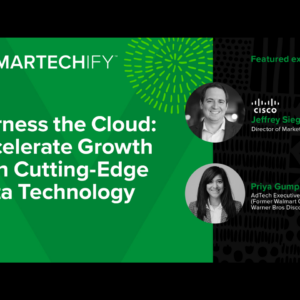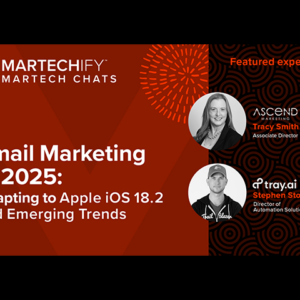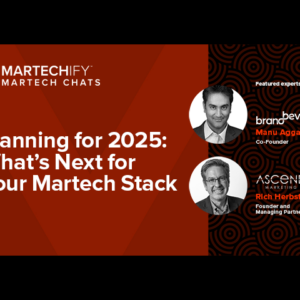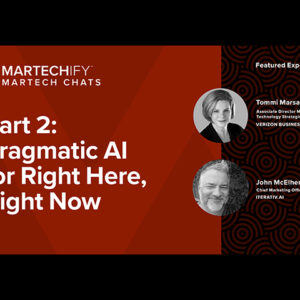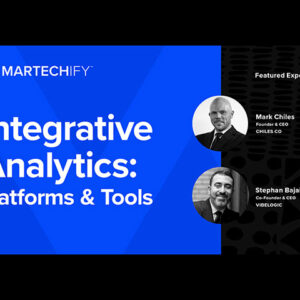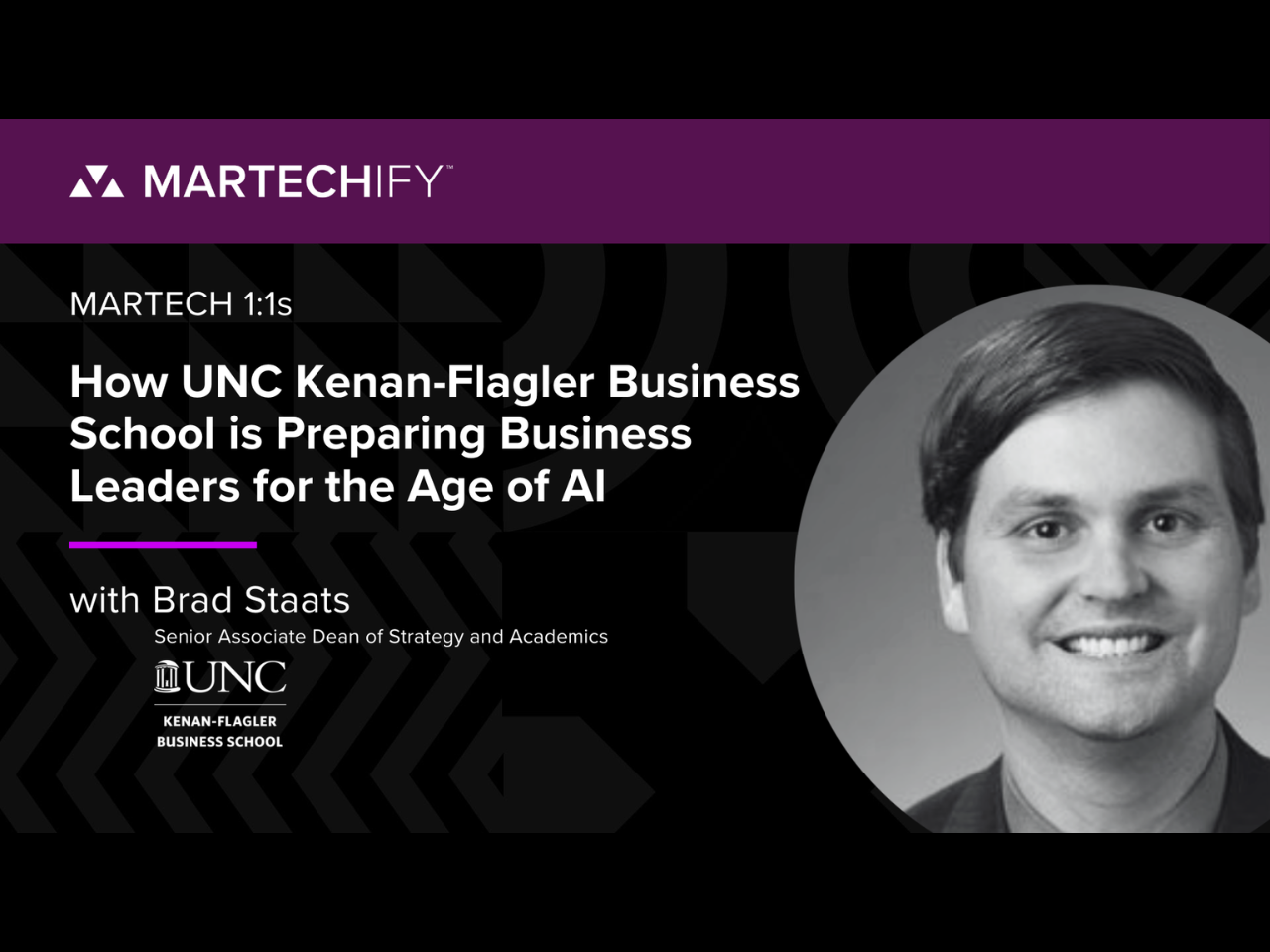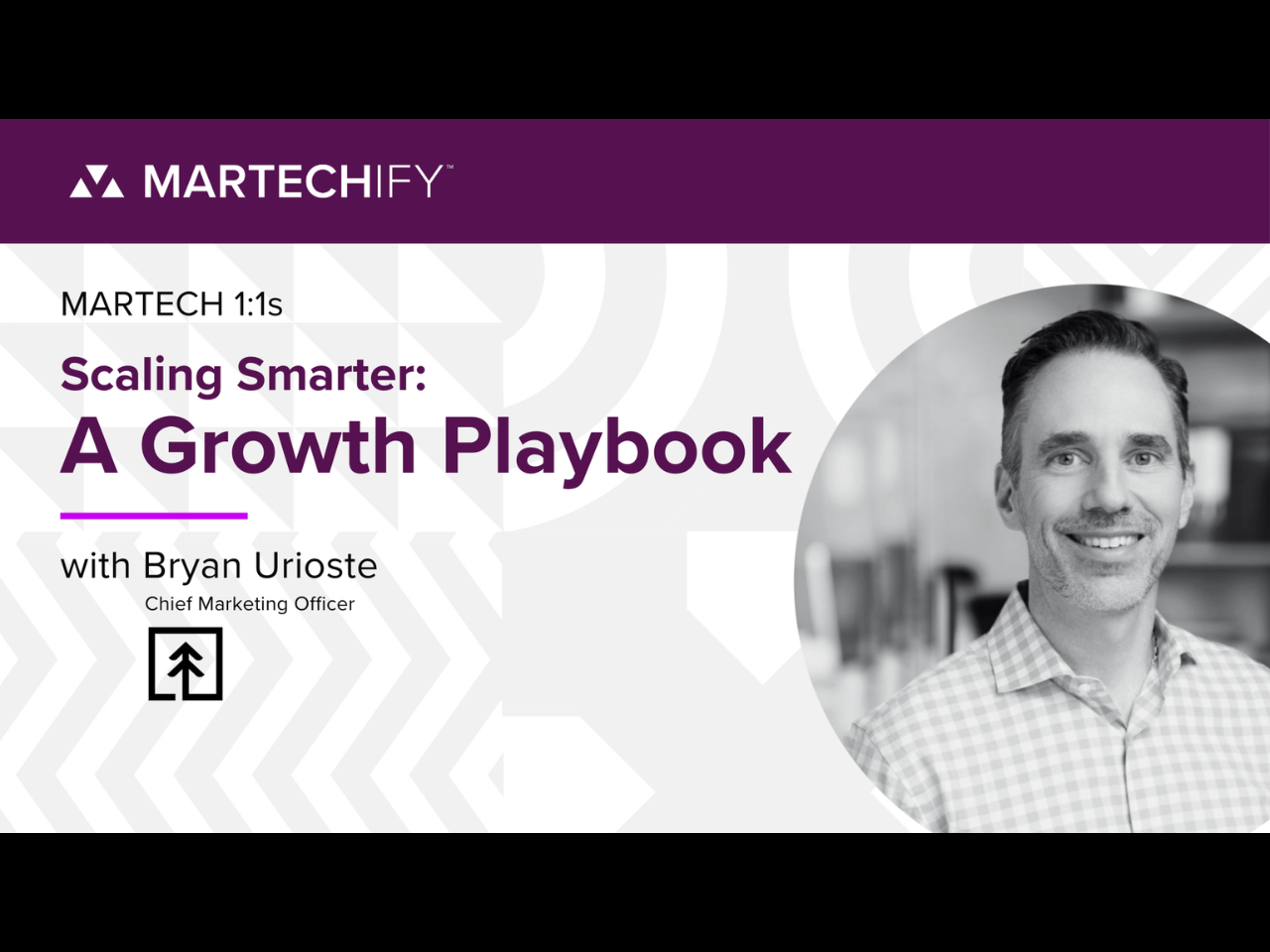HubSpot unveils what’s next: A look at their latest platform upgrades
- John Murphy, Senior Partner Development Manager at HubSpot
- AI and Automation, Campaign Optimization, Content Strategy and Marketing, Customer Experience (CX), Data Management and Analytics, Digital Transformation, Lead Gen / Lead Mgmt, Managing Org Transformation, Martech Stacks, Media and Adtech Optimization, Multi-Channel Journeys, Other Martech, Platform and Data Integration, Sales and Marketing Orchestration, Strategy and Trends
Artificial intelligence isn’t just changing the rules of marketing—it’s rewriting the entire playbook. Leading platforms like HubSpot must innovate fast to stay in the game. The Martechify team reached out to John Murphy, Senior Partner Development Manager at HubSpot, to get the latest scoop on HubSpot’s new features and capabilities.
Watch the full interview with John Murphy, where he shares how the latest upgrades from HubSpot are sharpening its competitive edge. This is a must watch interview if you are looking to stay on top of martech advancements!
From funnel to Loop
At the INBOUND Conference in September 2025, the most significant reveal was the Loop framework:
Express → Tailor → Amplify → Evolve.
Loop replaces a linear funnel with a rapid, repeating cycle where humans and AI collaborate.
Express
Define a crystal-clear point of view, target, and style. “This is where AI can come in to help customers express their unique brand identity,” John said. Teams can use unstructured data in the CRM such as calls, comments, and notes to sharpen the ideal customer profile (ICP) and upload a style guide so content aligns with voice and value.
Tailor
Use intent and profile data to make interactions personal and contextual. “We’re going to be able to identify which segments respond best to personalized content and create tailored website visits and calls to action,” John explained. HubSpot has renamed Lists to Segments and added AI assistance so “from one central place” marketers can spin up targeted versions of landing pages and CTAs.
Amplify
Publish where attention already lives. “Amplify means anything that you can schedule through HubSpot,” John said, citing paid ads on Google and LinkedIn, organic social, email, and video on YouTube or TikTok. Programmatic syndication can still run through partners, but the core Loop favors channels that can be orchestrated natively.
Evolve
Shorten the feedback loop. “This new era of marketing isn’t waiting for the next quarter to see what’s happening,” John said. The aim is to “spot those trends, run rapid experiments, and continuously refine the strategy based on the live data.”
John’s summary of the model: “Loop Marketing allows us to really center on the fact that it’s going to be a human and AI collaboration. It’s going to lower acquisition costs by being able to diversify the channels and continuously optimize. The nice thing is that Loop Marketing remains true to the principles that made inbound work. We’re educating customers, creating value, and building relationships, but we’ve adapted it to this new AI world.”
Express
Define a crystal-clear point of view, target, and style. “This is where AI can come in to help customers express their unique brand identity,” John said. Teams can use unstructured data in the CRM such as calls, comments, and notes to sharpen the ideal customer profile (ICP) and upload a style guide so content aligns with voice and value.
Tailor
Use intent and profile data to make interactions personal and contextual. “We’re going to be able to identify which segments respond best to personalized content and create tailored website visits and calls to action,” John explained. HubSpot has renamed Lists to Segments and added AI assistance so “from one central place” marketers can spin up targeted versions of landing pages and CTAs.
Amplify
Publish where attention already lives. “Amplify means anything that you can schedule through HubSpot,” John said, citing paid ads on Google and LinkedIn, organic social, email, and video on YouTube or TikTok. Programmatic syndication can still run through partners, but the core Loop favors channels that can be orchestrated natively.
Evolve
Shorten the feedback loop. “This new era of marketing isn’t waiting for the next quarter to see what’s happening,” John said. The aim is to “spot those trends, run rapid experiments, and continuously refine the strategy based on the live data.”
John’s summary of the model: “Loop Marketing allows us to really center on the fact that it’s going to be a human and AI collaboration. It’s going to lower acquisition costs by being able to diversify the channels and continuously optimize. The nice thing is that Loop Marketing remains true to the principles that made inbound work. We’re educating customers, creating value, and building relationships, but we’ve adapted it to this new AI world.”
Faster go-to-market
The Loop Playbook emphasizes speed. AI helps teams brainstorm, draft, version, and test campaigns without waiting on long production cycles. “Marketing Studio is an AI-powered drag-and-drop canvas for marketers to collaboratively plan campaigns, create content, and launch those campaigns to multiple channels,” John said. The promise is to move from idea to execution “in one centralized location,” guided by live data.
Hyper-personalization that feels human
Personalization now goes beyond merge tags. “Gone are the days where ‘Hi, {First Name}’ is enough,” John said. HubSpot’s dynamic AI email personalization “allows customers to use AI to generate unique content for every single recipient,” leveraging CRM fields such as recent company news or product launches to adapt copy at scale. The goal is relevance that reads as human, not surveillance.
Where is the line? John recommends cross-functional judgment before pressing send. Because teams across marketing, sales, and service operate on one system, “The marketing team can always reach out to the customer success team and be like, ‘What do you think about this message? Is this going to be too much? Is this going to be coming off too creepy?’” That shared view provides “an extra layer of spot checking before a campaign goes out.”
Where is the line? John recommends cross-functional judgment before pressing send. Because teams across marketing, sales, and service operate on one system, “The marketing team can always reach out to the customer success team and be like, ‘What do you think about this message? Is this going to be too much? Is this going to be coming off too creepy?’” That shared view provides “an extra layer of spot checking before a campaign goes out.”
Next-gen ads and content at scale
HubSpot is investing in creation and distribution support that meets buyers where they already consume information. While there isn’t a native tool for generating net-new video at scale, John noted AI agents can mine existing libraries: “If you have previously built videos, it can help marketers find relevant clips from their existing video library to use a clip editor to make longer form videos into shorter form clips.” Teams can create net-new video in external AI tools, then “ingest that back into HubSpot and use those in campaigns.”
What changes for marketers day to day
Several operational shifts stand out:
— Campaigns launch in days, not months. Asset creation, segmentation, and testing are increasingly AI-assisted, which compresses timelines.
— Optimization is continuous. Teams iterate in real time instead of waiting for quarterly readouts. John contrasts this with the old way: “It may take us six months to be like, ‘this campaign was effective and here’s why.’ Loop Marketing really allows us to optimize continuously and quickly.”
— Personalization deepens with guardrails. Data Hub improves inputs. Segments and dynamic content improve outputs. Cross-team reviews help keep personalization on the right side of helpful.
— Campaigns launch in days, not months. Asset creation, segmentation, and testing are increasingly AI-assisted, which compresses timelines.
— Optimization is continuous. Teams iterate in real time instead of waiting for quarterly readouts. John contrasts this with the old way: “It may take us six months to be like, ‘this campaign was effective and here’s why.’ Loop Marketing really allows us to optimize continuously and quickly.”
— Personalization deepens with guardrails. Data Hub improves inputs. Segments and dynamic content improve outputs. Cross-team reviews help keep personalization on the right side of helpful.
A practical takeaway
Inbound isn’t dead. It is looping. The playbook pairs human authenticity with machine speed. Or in John’s words, Loop is: “a revision to the inbound marketing methodology, which we know is never going to go away,” adapted for an environment where “buyers are now searching with AI instead of Google,” attention is scattered, and teams need to “learn fast and act fast.”
If you’re deciding where to start, consider this sequence:
1. Clean your data. Unify sources, de-duplicate, and standardize properties so AI has strong inputs.
2. Codify your POV. Document tone, ICPs, and value propositions so Express outputs are consistent.
3. Segment with intent. Use enriched signals to tailor messages that feel one-to-one.
4. Publish where buyers already are. Favor channels you can orchestrate and measure.
5. Tighten the Loop. Instrument tests, review live data, and evolve quickly.
John’s bottom line captures the moment: “I’m very excited to see what marketers can do with Data Hub and Marketing Hub combined together.” Whether you use HubSpot or not, the lesson travels. Cleaner data, clearer answers, faster loops.
If you’re deciding where to start, consider this sequence:
1. Clean your data. Unify sources, de-duplicate, and standardize properties so AI has strong inputs.
2. Codify your POV. Document tone, ICPs, and value propositions so Express outputs are consistent.
3. Segment with intent. Use enriched signals to tailor messages that feel one-to-one.
4. Publish where buyers already are. Favor channels you can orchestrate and measure.
5. Tighten the Loop. Instrument tests, review live data, and evolve quickly.
John’s bottom line captures the moment: “I’m very excited to see what marketers can do with Data Hub and Marketing Hub combined together.” Whether you use HubSpot or not, the lesson travels. Cleaner data, clearer answers, faster loops.

